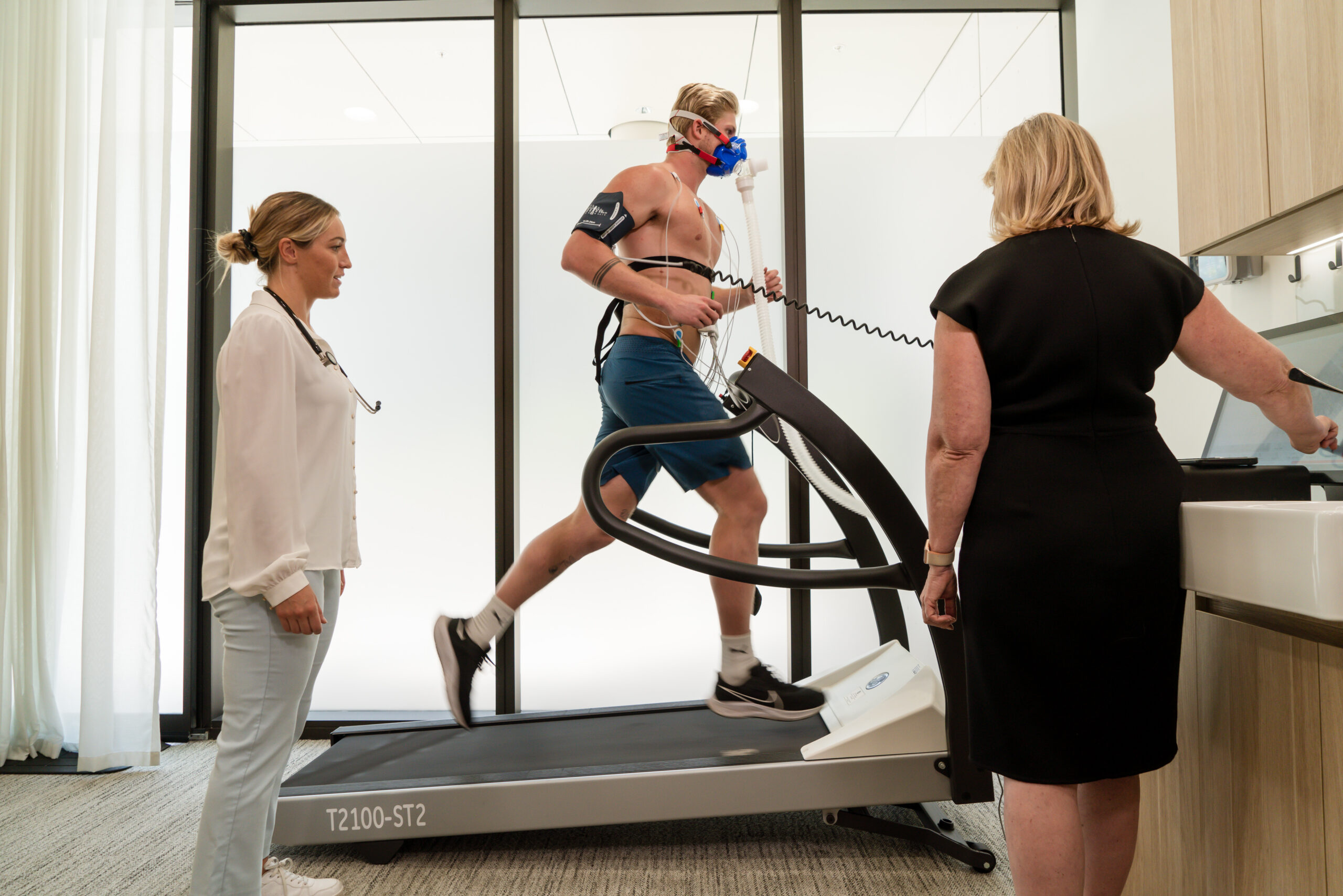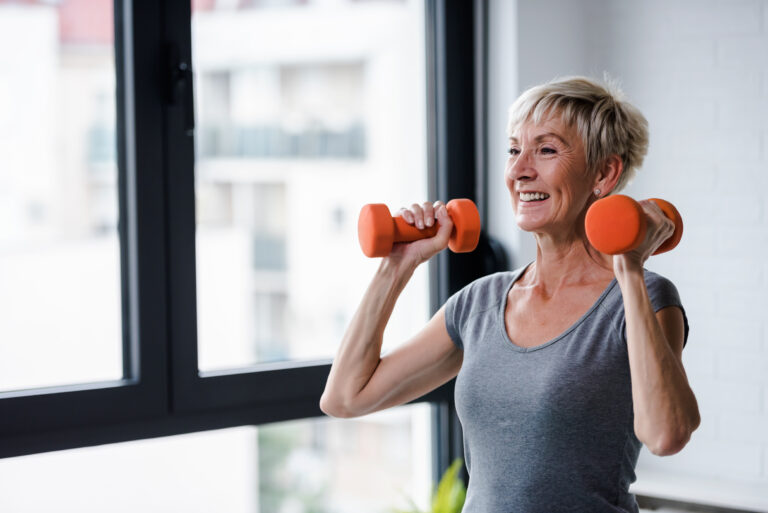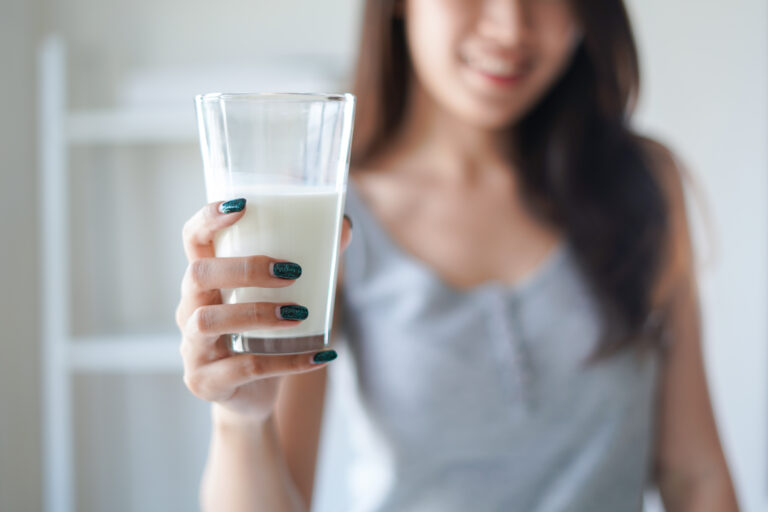In the quest for optimal health and longevity, understanding VO2max—a key indicator of cardiovascular fitness—can provide valuable insights. VO2max, or maximal oxygen uptake, measures the maximum amount of oxygen your body can utilise during intense exercise. It reflects your cardiovascular health and endurance capacity, making it a critical metric for assessing overall fitness and predicting health outcomes.
Understanding VO2max Levels Across Age Groups
As we age, our VO2max—the maximum amount of oxygen our body can use during intense exercise—usually decreases. Research indicates that this decline begins around the age of 25 and progresses at a rate of approximately 10% per decade. Specifically, between the ages of 50 and 75, this decline may accelerate to around 15%.
Several factors contribute to this decrease:
- Cardiovascular Changes: Aging leads to reduced maximal heart rate and stroke volume, affecting the heart’s ability to pump blood efficiently during exercise.
- Muscle Changes: Sarcopenia, the age-related loss of muscle mass, plays a significant role. By age 50, about 10% of muscle area is lost, with a more rapid decline in subsequent decades. With this we see a decline in muscle strength, which compounds the impact on overall fitness.
- Vascular Changes: Arterial walls thicken and stiffen over time, reducing flexibility and efficiency in delivering oxygenated blood to muscles.
- Peripheral Oxygen Extraction: There is a reduction in the body’s ability to extract oxygen from the blood and deliver it to the muscles during exercise.
These physiological changes collectively contribute to the decline in VO2max observed as we grow older. However, research also shows that regular physical activity can attenuate this decline, highlighting the importance of maintaining an active lifestyle throughout adulthood.
What Constitutes a “Good” VO2max?
A “good” VO2max is relative and depends on several factors, including age, gender and fitness level.
Research shows that improving VO2max is associated with increased longevity, with evidence showing that each unit increase in VO2max correlates with a significant extension in life expectancy.
VO2max is metric which serves as a gold standard for evaluating cardiorespiratory fitness and predicting long-term health outcomes.
Benefits of Improving VO2max
Enhancing your VO2max offers numerous health benefits:
- Reduced Risk of Cardiovascular Diseases: Higher VO2max is associated with a lower risk of heart disease and stroke, as it reflects better heart and vascular health.
- Improved Endurance: Enhances stamina for daily activities and physical performance, allowing you to sustain activities longer without fatigue.
- Better Quality of Life: Supports stress management and overall well-being, promoting a more active and fulfilling lifestyle.
- Enhanced Brain Health: Higher VO2max levels are correlated with lower inflammation, reduced oxidative stress, improved mitochondrial function, and enhanced brain structure and functional connectivity. These factors contribute to better cognitive function and reduced risk of neurodegenerative diseases.
- Reduced Inflammation: Improvements in VO2max are linked to lower levels of inflammatory markers. Lower inflammation levels play a crucial role in reducing the risk of chronic diseases such as cardiovascular disease, diabetes, and certain cancers.
How VO2max is Measured: The Bruce Protocol
VO2max testing at our St. Leonards clinic utilise the Bruce protocol for VO2max testing, which is a widely recognised and well researched method for assessing aerobic capacity. Here’s how it works:
- Incremental Treadmill Exercise: You start walking on a treadmill at a very low intensity, gradually increasing speed and incline every three minutes.
- Collection of Breath Samples: Throughout the test, you breathe through a mask connected to CardioCoach® which measures both the volume of oxygen, and the oxygen concentration, when you inhale and exhale.
- Stress ECG & Blood Pressure Response: We monitor your heart and blood pressure responses to exercise, ensuring your safety and checking for any silent conditions you might be unaware of.
- VO2max Calculation: The test continues until you reach your maximum exertion level or can no longer continue. Your VO2max is then measured along with your Peak VO₂, aerobic threshold and anaerobic threshold.

VO2max Testing and Assessment
At our clinic, VO2max testing provides a comprehensive assessment of your cardiovascular fitness. Results are compared against established norms from The Cooper Institute, allowing us to offer personalised recommendations for improving your health and longevity.
VO2max Chart
Female (values in ml/kg/min)
| Age | Very Poor | Poor | Fair | Good | Excellent | Superior |
| 13-19 | <25.0 | 25.0 – 30.9 | 31.0 – 34.9 | 35.0 – 38.9 | 39.0 – 41.9 | >41.9 |
| 20-29 | <23.6 | 23.6 – 28.9 | 29.0 – 32.9 | 33.0 – 36.9 | 37.0 – 41.0 | >41.0 |
| 30-39 | <22.8 | 22.8 – 26.9 | 27.0 – 31.4 | 31.5 – 35.6 | 35.7 – 40.0 | >40.0 |
| 40-49 | <21.0 | 21.0 – 24.4 | 24.5 – 28.9 | 29.0 – 32.8 | 32.9 – 36.9 | >36.9 |
| 50-59 | <20.2 | 20.2 – 22.7 | 22.8 – 26.9 | 27.0 – 31.4 | 31.5 – 35.7 | >35.7 |
| 60+ | <17.5 | 17.5 – 20.1 | 20.2 – 24.4 | 24.5 – 30.2 | 30.3 – 31.4 | >31.4 |
Male (values in ml/kg/min)
| Age | Very Poor | Poor | Fair | Good | Excellent | Superior |
| 13-19 | <35.0 | 35.0 – 38.3 | 38.4 – 45.1 | 45.2 – 50.9 | 51.0 – 55.9 | >55.9 |
| 20-29 | <33.0 | 33.0 – 36.4 | 36.5 – 42.4 | 42.5 – 46.4 | 46.5 – 52.4 | >52.4 |
| 30-39 | <31.5 | 31.5 – 35.4 | 35.5 – 40.9 | 41.0 – 44.9 | 45.0 – 49.4 | >49.4 |
| 40-49 | <30.2 | 30.2 – 33.5 | 33.6 – 38.9 | 39.0 – 43.7 | 43.8 – 48.0 | >48.0 |
| 50-59 | <26.1 | 26.1 – 30.9 | 31.0 – 35.7 | 35.8 – 40.9 | 41.0 – 45.3 | >45.3 |
| 60+ | <20.5 | 20.5 – 26.0 | 26.1 – 32.2 | 32.3 – 36.4 | 36.5 – 44.2 | >44.2 |
Lifestyle Changes to Support VO2max Improvement
Improving your VO2max requires a strategic approach to exercise and lifestyle. Here’s how you can optimise your fitness journey:
- Build a Base of Fitness: If you’re new to exercise or returning after a hiatus, it’s essential to start with a foundation. Consulting with an exercise physiologist can help tailor a program that suits your current fitness level and lifestyle. Whether it’s brisk walking, cycling, or swimming, finding an activity you enjoy is crucial for consistency—a key factor in long-term VO2max improvement.
- Add Intensity with Intervals: Once you’ve established a regular exercise routine, gradually increasing intensity is the next step. Interval training involves alternating bursts of higher-intensity exercise with periods of recovery. This method not only boosts cardiovascular fitness but also enhances your body’s ability to utilise oxygen efficiently during workouts.
- Challenge Yourself with Time Trials: Setting personal benchmarks through time trials can significantly improve VO2max. Whether it’s completing a faster 1km row or reducing your 5km run time, these challenges push your limits and promote continuous improvement. Working with an exercise physiologist can help structure these trials effectively to maximise their impact on your fitness goals.
Conclusion
Understanding your VO2max and its implications for health is crucial for long-term well-being. By improving your cardiovascular fitness through targeted lifestyle changes and personalised support, you can enhance both your quality of life and longevity. Take the first step towards optimising your health —book a VO2max test at our St. Leonards clinic today.
References
- Kim et al. 2016. The Effect of Aging on Relationships between Lean Body Mass and VO2max in Rowers. PLoS One. 11(8):e0160275
- Clausen et al. 2018. Midlife Cardiorespiratory Fitness and the Long-Term Risk of Mortality: 46 Years of Follow-Up. J Am Coll Cardiol. 72(9):987-995.
- Crowley et al. 2022. The Effect of Exercise Training Intensity on VO2max in Healthy Adults: An Overview of Systematic Reviews and Meta-Analyses. Transl Sports Med. 2022: 9310710.
- Kullo et al. 2007. Markers of inflammation are inversely associated with VO1max in asymptomatic men. Appl Physiol. 102:1374-1379.
- Cynthia Sieto. 2023. Does increased cardiorespiratory fitness decrease Alzheimer’s risk? The impact of physical fitness on neurodegeneration. Clinical Advisor. Available at https://www.clinicaladvisor.com/
- The Physical Fitness Specialist Certification Manual, The Cooper Institute for Aerobics Research, Dallas TX, revised 1997 printed in Advance Fitness Assessment & Exercise Prescription, 3rd Edn, Vivian H. Heyward, 1998. P48.



